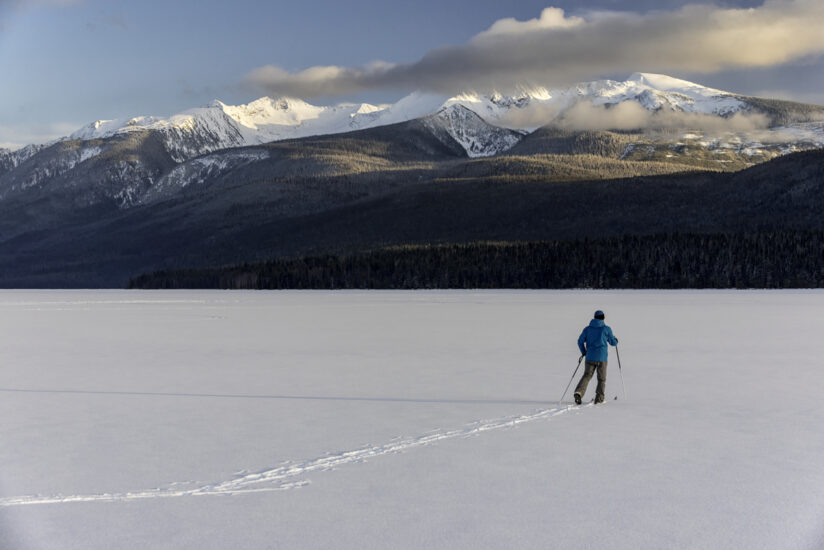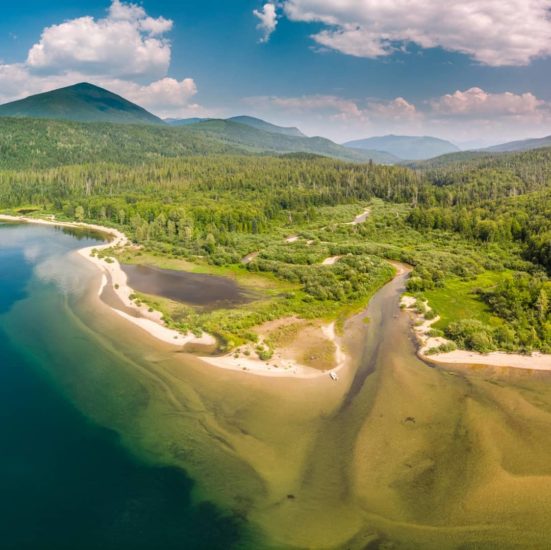Travel Info
- Distance
- ~ 52 km / 32 miles
- Suggested Trip Time
- 1/2 day
STOPS ON THIS LEG OF THE GOLD RUSH TRAIL
The first gold discovered in the Cariboo Gold Rush was on the Horsefly River in 1859
Heading east toward the beautiful community of Horsefly, the site of the original gold discovery in the Cariboo, three years before Billy Barker made his big strike on Williams Creek. Led by legendary First Nations guide John Baptiste, Peter Dunlevy and four friends panned the first gold in June of 1859 on the Horsefly River, near Quesnel Lake, collecting an astonishing 2,835g/100oz of nuggets in a single week. Following that discovery as the placer gold dried up, miners ventured further north to Likely, Quesnel Forks and Barkerville. The road from 150 Mile House to the present-day townsite of Horsefly, once a mining operation known as Harper’s Camp, was built to ease access to the region as the previous choices consisted of a handful of roughed out Hudson’s Bay Company trails. Today, Horsefly is an eclectic community known for its incredible fishing, festivals, outdoor activity and proximity to the Cariboo Mountains, Quesnel Lake, Horsefly Lake, Horsefly River and Crooked Lake.
150 Mile House is a quiet ranchland community known for its gold rush, and pioneer history and log homes. The Cariboo Waggon Road was in fact scheduled to run through Williams Lake; however, a funding dispute resulted in a detour that went from 150 Mile House to Soda Creek. From 150 Mile House, travellers generally decide whether to continue north to Williams Lake or head northeast along the Gold Rush Trail to the resort lakes around Horsefly and Likely, or the “Backroad to Barkerville.” As you head to Likely from 150 Mile you will pass the 153 Mile Store located on the 153 Mile Ranch, built by Italian settler Louis Crosina in 1914 and now owned by the Patenaude family. The 153 Mile House (not open to the public) is where a century-old log building still stands that once supplied food and goods to prospectors heading to the Cariboo goldfields.
- Visit the Little Red Schoolhouse, the oldest functional school building in the Cariboo Chilcotin. Constructed in 1896 beside the original Cariboo Waggon Road when 150 Mile House was a commercial hub, the wood-frame, one-room building is now a historical site and classroom open to the public in summer.
- There are several guest ranches found nearby, with horseback riding a popular summer pastime and snowmobiling and snowshoeing in winter.
- Turn off to take the road less travelled through ranchlands to the Cariboo Mountains to the source of the Cariboo Gold Rush. If you are adventurous, travel the scenic back road to Barkerville Historic Town & Park and the historic town of Wells BC.
- 150 Mile House is a great stopping point to stock up on supplies and get trusted local advice as you embark on all of your adventures in Horsefly, Likely, the Cariboo Mountains and Quesnel Lake area.
- 150 Mile House also offers great fishing at Dugan and Dewar Lake, as well as many other lakes close by. Dugan Lake is a great place to spend your day, or even stay overnight at the maintained campground and the same can be said for the smaller campground at Dewar Lake.

The first gold discovered in the Cariboo Gold Rush was on the Horsefly River in 1859, three years before Billy Barker made his big strike on Williams Creek. Legendary First Nations guide Long Baptiste, led Peter Dunlevy and four friends to the location near Quesnel Lake. The gold was easily visible, having been exposed by sockeye salmon during gravel churning spawning. The party picked up 2,835g/100oz of nuggets in a week, and so began the Cariboo gold rush of 1859 into BC’s Interior. Today Horsefly is a picturesque town known as the gateway to Quesnel Lake, Horsefly Lake, Crooked Lake and the Cariboo Mountains. Horsefly is also known as “the wheelchair friendly community of the Cariboo”, because of the community’s dedication to creating wheelchair access in and around their community. Outdoor lovers head here for camping, hiking, fishing, kayaking, mountain biking and backcountry skiing.
- Horsefly plays year-round host with many lively community events, including July’s Arts on the Fly Music Festival, the September Salmon Festival, Fall Fair and Horsefly Follies Theatrical Review.
- If you’re interested in the local history, be sure to visit the Horsefly Historical Society’s Pioneer Museum and Visitor Centre.
- Take a swim in the crystal clear Horsefly Lake or perhaps you would like to camp at Horsefly Lake Provincial Park on the shores of the lake.
- Visit picturesque Crooked Lake with its beautiful surrounding mountains and enjoy a perfect side route for anglers and explorers looking to get off the beaten path. Enjoy a lunch and stay at a Crooked Lake Resort campsite or one of their cozy cabins.
- In the fall you can marvel at the spawning salmon in the Horsefly River, the second biggest salmon spawning river in the province of British Columbia. Most of the river is navigable and people travel from all over the world to fly fish for rainbow trout here
- If you are feeling adventurous embark on the Horsefly Waterfall Quest. You will not find safety barriers or cell phone service at these breathtaking falls. To be prepared for this adventure, it is recommended that you have a 4 x 4 vehicle as you will be traveling on active logging roads.












